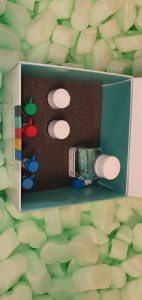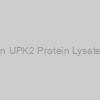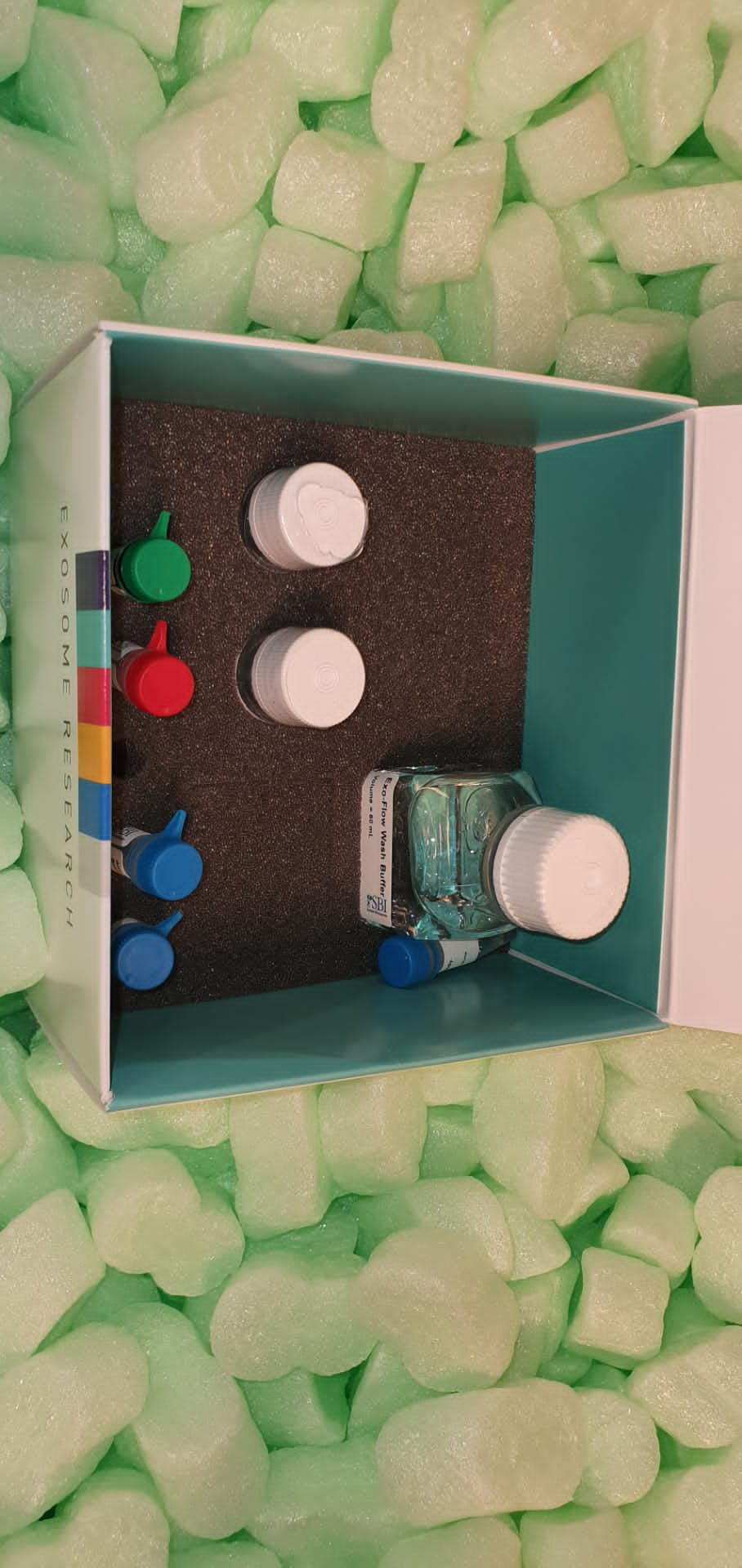The structure of cellulose nanomaterials is definitized by random deposition and can’t change in response to shifting software necessities. Herein, we current a magnetic field-controlled cellulose movie derived from wooden that reveals nice magnetic properties and dependable tunability enabled by included Fe3O4 nanoparticles and cellulose nanofibers (CNF) with a big length-diameter ratio. Fe3O4 nanoparticles are dispersed in suspensions of CNF in order to boost the magnetic response. The airplane magnetic CNF might be processed to type a three-dimensional (3D) flower-like construction alongside the magnetic induction line after making use of an exterior magnet.
Impressed by the fluidic transport in pure flowers, a bilayer construction was created utilizing the 3D flower-like movie because the photo voltaic power receiver and pure wooden because the water pathway in a solar-derived evaporation system. In contrast with a planar cellulose movie embellished with Fe3O4, the 3D construction design can drastically enhance the evaporation fee from 1.19 to 1.39 kg m-2 h-1 and the effectivity from 76.9 to 90.6% underneath 1 solar. Finite component molding additional reveals that the 3D structural prime layer is useful for the formation of a gradient temperature profile and the advance of the power effectivity via the discount of thermal radiation.
The magnetically managed fabrication represents a promising technique for designing cellulose nanomaterials with an advanced construction and controllable topography, which has a large spectrum of purposes in power storage units and water therapy. Though the transition to renewable energies will intensify the worldwide competitors for land, the potential impacts pushed by photo voltaic power stay unexplored. On this work, the potential photo voltaic land necessities and associated land use change emissions are computed for the EU, India, Japan and South Korea. A novel methodology is developed inside an built-in evaluation mannequin which hyperlinks socioeconomic, power, land and local weather techniques.
At 25-80% penetration within the electrical energy mixture of these areas by 2050, we discover that photo voltaic power could occupy 0.5-5% of whole land. The ensuing land cowl adjustments, together with oblique results, will probably trigger a internet launch of carbon starting from Zero to 50 gCO2/kWh, relying on the area, scale of enlargement, photo voltaic expertise effectivity and land administration practices in photo voltaic parks. Therefore, a coordinated planning and regulation of latest photo voltaic power infrastructures must be enforced to keep away from a big improve of their life cycle emissions via terrestrial carbon losses.
Shadow enhanced self-charging energy system for wave and photo voltaic power harvesting from the ocean
Hybrid energy-harvesting techniques that seize each wave and photo voltaic power from the oceans utilizing triboelectric nanogenerators and photovoltaic cells are promising renewable power options. Nonetheless, ubiquitous shadows forged from transferring objects in these techniques are undesirable as they degrade the efficiency of the photovoltaic cells. Right here we report a shadow-tribo-effect nanogenerator that hybrids tribo-effect and shadow-effect collectively to beat this problem. A number of fiber-supercapacitors are built-in with the shadow-tribo-effect nanogenerator to type a self-charging energy system. To seize and retailer wave/photo voltaic power from oceans, an power ball based mostly on the self-charging energy system is demonstrated.
By harnessing the shadow-effect, i.e. the shadow of the transferring object within the power ball, the charging time shortens to 253.Three s to cost the fiber-supercapacitors to the identical voltage (0.Three V) as utilizing pure tribo-effect. This cost-effective methodology to reap and retailer the wave/photo voltaic power from the oceans on this work is anticipated to encourage next-generation large-scale blue power harvesting. With the depletion of fossil power, photo voltaic power has steadily attracted folks’s consideration.
Dye-sensitized photo voltaic cells have developed quickly in recent times as a result of their low value and excessive conversion effectivity. On this article, based mostly on the theoretical analysis on the photovoltaic parameters of DSSCs within the early levels of the analysis workforce, we’ve got made an correct prediction of J sc, V oc, and PCE of C286. (The error in our predicted PCE values was 3.33% relative to the experiment.) Additionally, we additional designed a sequence of latest dyes CH1-CH5 by introducing donors and co-acceptors with C286-C288 because the prototype utilizing the DFT/TDDFT methodology.
The PCE of the designed dyes CH2-CH5 exceed the given dye C286, particularly the CH3 and CH4 obtained the PCE of 26.2 and 14.5%. This means the proposed dyes supply a dramatic enchancment on PCE for DSSC units. Furthermore, the designed dyes corresponding to CH3 and CH4 have nice potential to be utilized to photovoltaic purposes, additional enabling the design of novel, extremely environment friendly photoactive supplies. The collected clear water from the solar-steam evaporators reached the emission requirements of EU Water Framework Directive (91/271/EEC).

Value-effective useful resource utilization for waste biomass: A easy preparation methodology of photo-thermal biochar muffins (BCs) towards dye wastewater therapy with photo voltaic power
Waste biomass and dye wastewater pollutions have been the intense environmental issues. The interfacial solar-steam era expertise is an efficient and sustainable methodology for the water purification. Nonetheless, the advanced preparation course of, excessive financial value and doubtless secondary environmental air pollution of conventional photo-thermal supplies restricted their sensible large-scale software. Herein, the biochar muffins (BCs) deriving from waste biomass have been ready, and the granular and schistose MgO coatings have been dressed on the floor of carbonized fiber to enhance their hydrophilicity.
 Recombinant Human UPK2 Protein, His, E.coli-20ug |
|
QP13897-20ug |
EnQuireBio |
20ug |
EUR 241.2 |
) Recombinant Human Uroplakin-2/UPK2 Protein (His Tag) |
|
PKSH033198-10ug |
Elabscience Biotech |
10ug |
EUR 178 |
|
|
|
Description: Human |
) Recombinant Human Uroplakin-2/UPK2 Protein (His Tag) |
|
PKSH033198-50ug |
Elabscience Biotech |
50ug |
EUR 523 |
|
|
|
Description: Human |
) Recombinant Human Uroplakin-2 (UPK2) |
|
CSB-CF025656HU |
Cusabio |
9863 mg |
Ask for price |
) Recombinant Human Uroplakin-2/UPK2 (C-6His) |
|
AP75439 |
SAB |
1mg |
EUR 3209 |
|
|
) Recombinant Human Uroplakin-2/UPK2 (C-6His) |
|
CA11-10ug |
Novoprotein |
10ug |
EUR 242.4 |
|
Description: Lyophilized from a 0.2 μm filtered solution of 20mM PB,150mM NaCl,pH7.4. |
) Recombinant Human Uroplakin-2/UPK2 (C-6His) |
|
CA11-1mg |
Novoprotein |
1mg |
EUR 2739.6 |
|
Description: Lyophilized from a 0.2 μm filtered solution of 20mM PB,150mM NaCl,pH7.4. |
) Recombinant Human Uroplakin-2/UPK2 (C-6His) |
|
CA11-500ug |
Novoprotein |
500ug |
EUR 1935.6 |
|
Description: Lyophilized from a 0.2 μm filtered solution of 20mM PB,150mM NaCl,pH7.4. |
) Recombinant Human Uroplakin-2/UPK2 (C-6His) |
|
CA11-50ug |
Novoprotein |
50ug |
EUR 595.2 |
|
Description: Lyophilized from a 0.2 μm filtered solution of 20mM PB,150mM NaCl,pH7.4. |
) Recombinant Uroplakin 2 (UPK2) |
|
RPF561Hu01 |
Cloud-Clone |
10ug |
EUR 120 |
) Recombinant Uroplakin 2 (UPK2) |
|
4-RPF561Hu01 |
Cloud-Clone |
-
Ask for price
-
Ask for price
-
Ask for price
-
Ask for price
-
Ask for price
-
Ask for price
-
Ask for price
|
- 100 ug
- 10ug
- 1 mg
- 200 ug
- 500 ug
- 50ug
- 5 mg
|
|
|
|
Description: Recombinant Human Uroplakin 2 expressed in: E.coli |
) Recombinant Uroplakin 2 (UPK2) |
|
RPF561Ra01 |
Cloud-Clone |
10ug |
EUR 140 |
) UPK1A Recombinant Protein (Human) |
|
RP044680 |
ABM |
100 ug |
Ask for price |
) UPK1B Recombinant Protein (Human) |
|
RP033997 |
ABM |
100 ug |
Ask for price |
) UPK3A Recombinant Protein (Human) |
|
RP034000 |
ABM |
100 ug |
Ask for price |
) UPK3B Recombinant Protein (Human) |
|
RP034003 |
ABM |
100 ug |
Ask for price |
) UPK3BL Recombinant Protein (Human) |
|
RP106565 |
ABM |
100 ug |
Ask for price |
) UPK3BP1 Recombinant Protein (Human) |
|
RP106568 |
ABM |
100 ug |
Ask for price |
) Recombinant Mouse Uroplakin-2 (Upk2) |
|
CSB-EP025656MO |
Cusabio |
2465 mg |
Ask for price |
) Recombinant Mouse Uroplakin-2(Upk2) |
|
AP77668 |
SAB |
1mg |
EUR 2826 |
|
|
 UPK3A Uroplakin 3A Human Recombinant Protein |
|
PROTO75631 |
BosterBio |
Regular: 10ug |
EUR 380.4 |
|
Description: UPK3A Human Recombinant produced in E.Coli is a single, non-glycosylated polypeptide chain containing 214 amino acids (19-207 a.a.) and having a molecular mass of 23.1kDa.;UPK3A is fused to a 25 amino acid His-tag at N-terminus & purified by proprietary chromatographic techniques. |
 Recombinant Human UPK3A Protein, His, E.coli-1mg |
|
QP13898-1mg |
EnQuireBio |
1mg |
EUR 6301.2 |
 Recombinant Human UPK3A Protein, His, E.coli-2ug |
|
QP13898-2ug |
EnQuireBio |
2ug |
EUR 186 |
 Recombinant Human UPK3A Protein, His, E.coli-10ug |
|
QP13898-10ug |
EnQuireBio |
10ug |
EUR 241.2 |
) UPK1A Recombinant Protein (Rat) |
|
RP235931 |
ABM |
100 ug |
Ask for price |
) UPK1B Recombinant Protein (Rat) |
|
RP235934 |
ABM |
100 ug |
Ask for price |
) UPK3A Recombinant Protein (Rat) |
|
RP235940 |
ABM |
100 ug |
Ask for price |
) UPK3BL Recombinant Protein (Rat) |
|
RP235943 |
ABM |
100 ug |
Ask for price |
) UPK1A Recombinant Protein (Mouse) |
|
RP183200 |
ABM |
100 ug |
Ask for price |
) UPK1B Recombinant Protein (Mouse) |
|
RP183203 |
ABM |
100 ug |
Ask for price |
) UPK3A Recombinant Protein (Mouse) |
|
RP183209 |
ABM |
100 ug |
Ask for price |
) UPK3B Recombinant Protein (Mouse) |
|
RP183212 |
ABM |
100 ug |
Ask for price |
 UPK3A, human recombinant |
|
7188-10 |
Biovision |
each |
EUR 366 |
 UPK3A, human recombinant |
|
7188-50 |
Biovision |
each |
EUR 992.4 |
 Human UPK2 Protein Lysate 20ug |
|
IHUUPK2PLLY20UG |
Innovative research |
each |
EUR 213 |
|
|
|
Description: Human UPK2 Protein Lysate 20ug |
 Protein) Human Uroplakin 2 (UPK2) Protein |
|
20-abx650668 |
Abbexa |
-
Ask for price
-
Ask for price
-
Ask for price
-
Ask for price
-
Ask for price
|
- 100 ug
- 10 ug
- 1 mg
- 200 ug
- 50 ug
|
|
|
 Protein) Human Uroplakin 2 (UPK2) Protein |
|
abx650668-100g |
Abbexa |
100 µg |
EUR 425 |
 Protein) Human Uroplakin 2 (UPK2) Protein |
|
abx650668-10g |
Abbexa |
10 µg |
EUR 187.5 |
 Protein) Human Uroplakin 2 (UPK2) Protein |
|
abx650668-50g |
Abbexa |
50 µg |
EUR 300 |
 (pPM-C-HA)) UPK2 Protein Vector (Human) (pPM-C-HA) |
|
PV059579 |
ABM |
500 ng |
EUR 577.2 |
 Human sCD42b/GP1Ba , recombinant Human Recombinant Protein |
|
S01-084 |
ReliaTech |
50 µg |
EUR 196.35 |
|
Description: CD42b, also known as GP1Ba (GP1B alpha, Glycoprotein 1Ba) is a single pass transmembrane glycoprotein that functions as the key ligand binding subunit of the GP1B platelet surface receptor. The association of CD42b/GP1Ba with GP1Bb (covalently) and platelet glycoproteins IX and V (non‐covalently) forms the von Willebrand factor receptor. The binding of von Willebrand factor (VWF) to its platelet receptor initiates the primary mechanism for the adhesion of platelets to a site of vascular injury and subsequent platelet activation. Additionally, the cytoplasmic (C‐terminal) domain of CD42b/GP1Ba can bind and activate signal transduction molecules, including 14‐3‐3ζ and β‐filamin. Mutations in von Willebrand factor and to a lesser extent, CD42b/GP1Ba, that affect the binding of VWF to the GP1B receptor are the primary cause of the hereditary bleeding disorder known as Type 2 von Willebrand disease (VWD). Mutations in the CD42b/GP1Ba gene have also been linked to a related bleeding disorder, Bernard‐Soulier disease. Recombinant Human sCD42b/GP1Ba is a 54.6 kDa protein containing 496 amino acid residues that correspond to the extracellular portion of CD42b/GP1Ba, plus a C‐terminal His‐Tag. Due to glycosylation, it migrates at approximately 100‐115 kDa by SDS‐PAGE analysis under reducing and non‐reducing conditions. |
 Human sCD42b/GP1Ba , recombinant Human Recombinant Protein |
|
S01-084S |
ReliaTech |
10 µg |
EUR 92.4 |
|
Description: CD42b, also known as GP1Ba (GP1B alpha, Glycoprotein 1Ba) is a single pass transmembrane glycoprotein that functions as the key ligand binding subunit of the GP1B platelet surface receptor. The association of CD42b/GP1Ba with GP1Bb (covalently) and platelet glycoproteins IX and V (non‐covalently) forms the von Willebrand factor receptor. The binding of von Willebrand factor (VWF) to its platelet receptor initiates the primary mechanism for the adhesion of platelets to a site of vascular injury and subsequent platelet activation. Additionally, the cytoplasmic (C‐terminal) domain of CD42b/GP1Ba can bind and activate signal transduction molecules, including 14‐3‐3ζ and β‐filamin. Mutations in von Willebrand factor and to a lesser extent, CD42b/GP1Ba, that affect the binding of VWF to the GP1B receptor are the primary cause of the hereditary bleeding disorder known as Type 2 von Willebrand disease (VWD). Mutations in the CD42b/GP1Ba gene have also been linked to a related bleeding disorder, Bernard‐Soulier disease. Recombinant Human sCD42b/GP1Ba is a 54.6 kDa protein containing 496 amino acid residues that correspond to the extracellular portion of CD42b/GP1Ba, plus a C‐terminal His‐Tag. Due to glycosylation, it migrates at approximately 100‐115 kDa by SDS‐PAGE analysis under reducing and non‐reducing conditions. |
 (pPB-C-His)) UPK2 Protein Vector (Human) (pPB-C-His) |
|
PV059577 |
ABM |
500 ng |
EUR 577.2 |
 (pPB-N-His)) UPK2 Protein Vector (Human) (pPB-N-His) |
|
PV059578 |
ABM |
500 ng |
EUR 577.2 |
 (pPM-C-His)) UPK2 Protein Vector (Human) (pPM-C-His) |
|
PV059580 |
ABM |
500 ng |
EUR 577.2 |
 (Recombinant- Tag)) TAGAP Recombinant Protein (Human) (Recombinant- Tag) |
|
RP030880 |
ABM |
100 ug |
Ask for price |
 (Recombinant- Tag)) TAGLN Recombinant Protein (Human) (Recombinant- Tag) |
|
RP030883 |
ABM |
100 ug |
Ask for price |
 (Recombinant- Tag)) TAGLN Recombinant Protein (Human) (Recombinant- Tag) |
|
RP030886 |
ABM |
100 ug |
Ask for price |
 (Recombinant- Tag)) TAGAP Recombinant Protein (Human) (Recombinant- Tag) |
|
RP043930 |
ABM |
100 ug |
Ask for price |
 (Recombinant- Tag)) CTAGE1 Recombinant Protein (Human) (Recombinant- Tag) |
|
RP008266 |
ABM |
100 ug |
Ask for price |
 (Recombinant- Tag)) CTAGE5 Recombinant Protein (Human) (Recombinant- Tag) |
|
RP008269 |
ABM |
100 ug |
Ask for price |
 (Recombinant- Tag)) CTAGEP Recombinant Protein (Human) (Recombinant- Tag) |
|
RP008275 |
ABM |
100 ug |
Ask for price |
 (Recombinant Tag)) TAGLN2 Recombinant Protein (Human) (Recombinant Tag) |
|
RP030889 |
ABM |
100 ug |
Ask for price |
 (Recombinant Tag)) TAGLN2 Recombinant Protein (Human) (Recombinant Tag) |
|
RP030892 |
ABM |
100 ug |
Ask for price |
 (Recombinant Tag)) TAGLN3 Recombinant Protein (Human) (Recombinant Tag) |
|
RP030895 |
ABM |
100 ug |
Ask for price |
 (Recombinant- Tag)) CTAGE4 Recombinant Protein (Human) (Recombinant- Tag) |
|
RP053403 |
ABM |
100 ug |
Ask for price |
 (Recombinant- Tag)) CTAGE8 Recombinant Protein (Human) (Recombinant- Tag) |
|
RP053409 |
ABM |
100 ug |
Ask for price |
 (Recombinant- Tag)) CTAGE9 Recombinant Protein (Human) (Recombinant- Tag) |
|
RP053412 |
ABM |
100 ug |
Ask for price |
 (Recombinant- Tag)) CTAG1A Recombinant Protein (Human) (Recombinant- Tag) |
|
RP038332 |
ABM |
100 ug |
Ask for price |
 (Recombinant- Tag)) CTAG1B Recombinant Protein (Human) (Recombinant- Tag) |
|
RP038335 |
ABM |
100 ug |
Ask for price |
 (Recombinant- Tag)) CTAGE5 Recombinant Protein (Human) (Recombinant- Tag) |
|
RP038338 |
ABM |
100 ug |
Ask for price |
 (Recombinant Tag)) CTAGE6P Recombinant Protein (Human) (Recombinant Tag) |
|
RP008272 |
ABM |
100 ug |
Ask for price |
 (Recombinant Tag)) STAG3L1 Recombinant Protein (Human) (Recombinant Tag) |
|
RP030283 |
ABM |
100 ug |
Ask for price |
 (Recombinant Tag)) STAG3L2 Recombinant Protein (Human) (Recombinant Tag) |
|
RP030286 |
ABM |
100 ug |
Ask for price |
 (Recombinant Tag)) STAG3L3 Recombinant Protein (Human) (Recombinant Tag) |
|
RP030289 |
ABM |
100 ug |
Ask for price |
 (Recombinant Tag)) STAG3L4 Recombinant Protein (Human) (Recombinant Tag) |
|
RP030292 |
ABM |
100 ug |
Ask for price |
 (Recombinant Tag)) CTAGE3P Recombinant Protein (Human) (Recombinant Tag) |
|
RP053400 |
ABM |
100 ug |
Ask for price |
 BAD Protein Human Recombinant Protein |
|
PROTQ92934 |
BosterBio |
Regular: 5ug |
EUR 574.8 |
|
Description: Bcl2 antagonist of cell death (BAD) Human Recombinant full length protein expressed in E.coli, shows a 51 kDa band on SDS-PAGE(Icluding GST tag). ;The BAD protein is purified by proprietary chromatographic techniques. |
 p53 Protein Human Recombinant Protein |
|
PROTP04637-1 |
BosterBio |
Regular: 5ug |
EUR 574.8 |
|
Description: p53 Human Recombinant full length produced in E.Coli is a non-glycosylated, polypeptide chain having a total Mw of 81kDa. p53 Human Recombinant is fused to GST tag and purified by proprietary chromatographic techniques. |
 PHF11 Protein Human Recombinant Protein |
|
PROTQ9UIL8 |
BosterBio |
Regular: 20ug |
EUR 380.4 |
|
Description: PHF11 Human Recombinant produced in E.Coli is a single, non-glycosylated polypeptide chain containing 351 amino acids (1-331 a.a.) and having a molecular mass of 39.7kDa.;PHF11 is fused to a 20 amino acid His-tag at N-terminus & purified by proprietary chromatographic techniques. |
 RECOMBINANT HUMAN PROTEIN |
|
RPH-100 |
IBI Scientific |
#IFN GAMMA / 16.8kDa MW / 5uG |
EUR 195 |
 RECOMBINANT HUMAN PROTEIN |
|
RPH-101 |
IBI Scientific |
#IFN GAMMA/16.8kDa MW/ 25UG |
EUR 374.72 |
 RECOMBINANT HUMAN PROTEIN |
|
RPH-102 |
IBI Scientific |
#IFN GAMMA/16.8kDa MW/2x25uG |
EUR 703.9 |
 RECOMBINANT HUMAN PROTEIN |
|
RPH-103 |
IBI Scientific |
#IFN GAMMA/16.8kDa MW/1X100uG |
EUR 1065.33 |
 RECOMBINANT HUMAN PROTEIN |
|
RPH-104 |
IBI Scientific |
#IFN GAMMA/16.8kDa MW/2X100uG |
EUR 2043.61 |
 RECOMBINANT HUMAN PROTEIN |
|
RPH-105 |
IBI Scientific |
#IFN GAMMA/16.8kDa MW/5X100uG |
EUR 4997 |
 RECOMBINANT HUMAN PROTEIN |
|
RPH-106 |
IBI Scientific |
#IFN GAMMA/16.8kDa MW/10X100uG |
EUR 9903.14 |
 RECOMBINANT HUMAN PROTEIN |
|
RPH-110 |
IBI Scientific |
TNF / 17.2kDa MW / 5uG |
EUR 195 |
 RECOMBINANT HUMAN PROTEIN |
|
RPH-111 |
IBI Scientific |
TNF / 17.2kDa MW / 25uG |
EUR 374.72 |
 RECOMBINANT HUMAN PROTEIN |
|
RPH-112 |
IBI Scientific |
TNF / 17.2kDa MW / 2x25uG |
EUR 703.9 |
 RECOMBINANT HUMAN PROTEIN |
|
RPH-120 |
IBI Scientific |
IL-4 / 15.0kDa MW / 5uG |
EUR 195 |
 RECOMBINANT HUMAN PROTEIN |
|
RPH-121 |
IBI Scientific |
IL-4 / 15.0kDa MW / 25uG |
EUR 374.72 |
 RECOMBINANT HUMAN PROTEIN |
|
RPH-122 |
IBI Scientific |
IL-4 / 15.0kDa MW / 2x25uG |
EUR 703.9 |
 RECOMBINANT HUMAN PROTEIN |
|
RPH-123 |
IBI Scientific |
IL-4 / 15.0kDa MW / 100uG |
EUR 1065.33 |
 RECOMBINANT HUMAN PROTEIN |
|
RPH-124 |
IBI Scientific |
IL-4 / 15.0kDa MW / 2x100uG |
EUR 2043.61 |
 RECOMBINANT HUMAN PROTEIN |
|
RPH-125 |
IBI Scientific |
IL-4 / 15.0kDa MW / 5x100uG |
EUR 4997 |
 RECOMBINANT HUMAN PROTEIN |
|
RPH-126 |
IBI Scientific |
IL-4 / 15.0kDa MW / 10x100uG |
EUR 9903.14 |
 RECOMBINANT HUMAN PROTEIN |
|
RPH-130 |
IBI Scientific |
IL-8 / 9.1kDa MW / 5uG |
EUR 195 |
 RECOMBINANT HUMAN PROTEIN |
|
RPH-131 |
IBI Scientific |
IL-8 / 9.1kDa MW / 25uG |
EUR 374.72 |
 RECOMBINANT HUMAN PROTEIN |
|
RPH-133 |
IBI Scientific |
IL-8 / 9.1kDa MW / 100uG |
EUR 1065.33 |
 RECOMBINANT HUMAN PROTEIN |
|
RPH-134 |
IBI Scientific |
IL-8 / 9.1kDa MW / 2x100uG |
EUR 2043.61 |
 RECOMBINANT HUMAN PROTEIN |
|
RPH-135 |
IBI Scientific |
IL-8 / 9.1kDa MW / 5x100uG |
EUR 4997 |
 RECOMBINANT HUMAN PROTEIN |
|
RPH-136 |
IBI Scientific |
IL-8 / 9.1kDa MW / 10x100uG |
EUR 9903.14 |
 RECOMBINANT HUMAN PROTEIN |
|
RPH-140 |
IBI Scientific |
IL-19 / 17.8kDa MW / 5uG |
EUR 195 |
 RECOMBINANT HUMAN PROTEIN |
|
RPH-141 |
IBI Scientific |
IL-19 / 17.8kDa MW / 25uG |
EUR 374.72 |
 RECOMBINANT HUMAN PROTEIN |
|
RPH-142 |
IBI Scientific |
IL-19 / 17.8kDa MW / 2x25uG |
EUR 703.9 |
 RECOMBINANT HUMAN PROTEIN |
|
RPH-150 |
IBI Scientific |
APRIL / 16.4kDa MW/ 5uG |
EUR 195 |
 RECOMBINANT HUMAN PROTEIN |
|
RPH-151 |
IBI Scientific |
APRIL / 16.4kDa MW / 5x5uG |
EUR 374.72 |
 RECOMBINANT HUMAN PROTEIN |
|
RPH-160 |
IBI Scientific |
#IL-2 / 15.4kDa MW / 5uG |
EUR 195 |
 RECOMBINANT HUMAN PROTEIN |
|
RPH-161 |
IBI Scientific |
#IL-2 / 15.4kDa MW / 5x5uG |
EUR 374.72 |
 (Recombinant-P Tag)) CTAG2 Recombinant Protein (Human) (Recombinant-P Tag) |
|
RP053376 |
ABM |
100 ug |
Ask for price |
) HP Recombinant Protein (Human) |
|
RP015181 |
ABM |
100 ug |
Ask for price |
) IK Recombinant Protein (Human) |
|
RP015880 |
ABM |
100 ug |
Ask for price |
) MB Recombinant Protein (Human) |
|
RP018898 |
ABM |
100 ug |
Ask for price |
) MB Recombinant Protein (Human) |
|
RP018901 |
ABM |
100 ug |
Ask for price |
) C9 Recombinant Protein (Human) |
|
RP005209 |
ABM |
100 ug |
Ask for price |
) CS Recombinant Protein (Human) |
|
RP008116 |
ABM |
100 ug |
Ask for price |
) CS Recombinant Protein (Human) |
|
RP008119 |
ABM |
100 ug |
Ask for price |
The BCs with excessive photo voltaic absorbance and super-hydrophilicity have been utilized within the photo-thermal purification of dye wastewater with photo voltaic power. The best evaporation fee of dye wastewater with BCs reached 2.27 kg m-2 h-1, and the corresponding conversion effectivity of photo voltaic to steam era was 78.98% underneath the simulated photo voltaic irradiation (1846.Zero w/m2). Contemplating the straightforward and economical preparation methodology, this course of made the sensible large-scale software of photo-thermal BCs on dye wastewater therapy a actuality, and in addition offered an cost-effective administration technique for the waste biomass.

